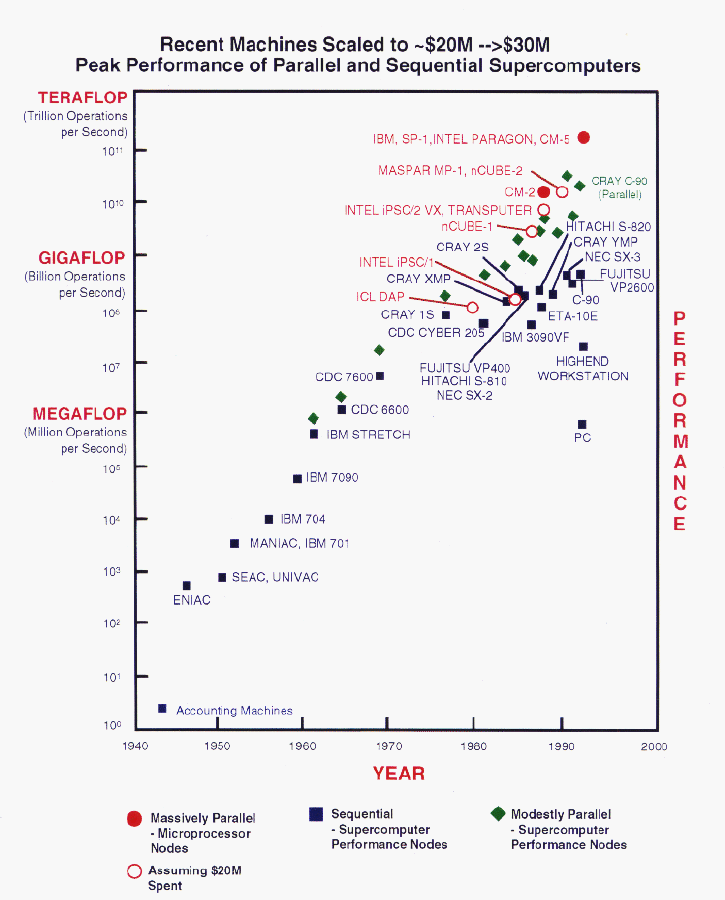




Next: 2.2 Hardware Trends
Up: 2 Technical Backdrop
Previous: 2 Technical Backdrop
This chapter surveys activities related to parallel computing that took place
around the time that C P was an active project, primarily during the
1980s. The major areas that are covered are hardware, software, research
projects, and production uses of parallel computers. In each case, there is
no attempt to present a comprehensive list or survey of all the work that was
done in that area. Rather, the attempt is to identify some of the major
events during the period.
P was an active project, primarily during the
1980s. The major areas that are covered are hardware, software, research
projects, and production uses of parallel computers. In each case, there is
no attempt to present a comprehensive list or survey of all the work that was
done in that area. Rather, the attempt is to identify some of the major
events during the period.
There are two major motivations for creating and using parallel computer
architectures. The first is that, as surveyed in Section 1.2
parallelism is the only avenue to achieve vastly higher speeds than are
possible now from a single processor. This was the primary motivation for
initiating C P. Table 2.1 demonstrates dramatically the
rather slow increase in speed of single-processor systems for one particular
brand of supercomputer, CRAYs, the most popular
supercomputer in the world. Figure 2.1 (Color Plate) shows a more
comprehensive sample of computer performance, measured in operations
per second, from the 1940s extrapolated through the year 2000.
P. Table 2.1 demonstrates dramatically the
rather slow increase in speed of single-processor systems for one particular
brand of supercomputer, CRAYs, the most popular
supercomputer in the world. Figure 2.1 (Color Plate) shows a more
comprehensive sample of computer performance, measured in operations
per second, from the 1940s extrapolated through the year 2000.

Figure 2.1: Historical trends of peak computer
performance. In some cases, we have scaled up parallel performance to
correspond to a configuration that would cost approximately $20 million.
A second motivation for the use of parallel architectures is that they should
be considerably cheaper than sequential machines for systems of moderate
speeds; that is, not necessarily supercomputers but instead minicomputers or
mini-supercomputers would be cheaper to produce for a given performance level
than the equivalent sequential system.

Table 2.1: Cycle Times
At the beginning of the 1980s, the goals of research in parallel computer
architectures were to achieve much higher speeds than could be obtained from
sequential architectures and to get much better price performance through
the use of parallelism than would be possible from sequential machines.
Guy Robinson
Wed Mar 1 10:19:35 EST 1995
 P was an active project, primarily during the
1980s. The major areas that are covered are hardware, software, research
projects, and production uses of parallel computers. In each case, there is
no attempt to present a comprehensive list or survey of all the work that was
done in that area. Rather, the attempt is to identify some of the major
events during the period.
P was an active project, primarily during the
1980s. The major areas that are covered are hardware, software, research
projects, and production uses of parallel computers. In each case, there is
no attempt to present a comprehensive list or survey of all the work that was
done in that area. Rather, the attempt is to identify some of the major
events during the period.





 P. Table
P. Table 
